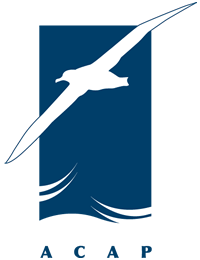{mosimage}
Over the last decade or so, a number of publications, suitable for use aboard fishing vessels, has been produced to aid in identifying seabirds caught on longlines and in reducing seabird bycatch in longline fisheries. A bibliographic list follows.
Please e-mail
Biswell, Shelly F. 2007. A Fisher's Guide to New Zealand Seabirds. [Wellington]: Department of Conservation. 55 pp. http://www.doc.govt.nz/upload/documents/conservation/marine-and-coastal/fishing/fishers-guide-to-new-zealand-seabirds.pdf.
Brothers, Nigel [1990s]. Catching Fish not Birds. A Guide to Improving your Longline Fishing Efficiency. [Hobart]: Parks & Wildlife Service Tasmania. 73 pp. ISBN 0 7246 4282 X
Brothers, Nigel & Hoy, Dawn [1990s]. Longline Fishing Dollars and Sense. Catching Fish not Birds using Bottom Set or Mid Water Set Longlines. Pesca de Palangreros los Dolares y en Sentido Comun. Capturando Peces en Vez de Aves Marinas usando Palangreros de Profundidad. 80 pp. Stanley: Consolidated Fisheries Ltd. ISBN 0 7242 4538 8. A Chinese version was published in 1998.
CCAMLR 1996. Fish the Sea Not the Sky. How to Avoid by-catch of Seabirds when Fishing with Bottom Longlines. Hobart: Commission for the Conservation of Antarctic Marine Living Resources. 46 pp. Also published in French, Russian and Spanish.
Onley, Derek & Bartle, Sandy 1999. Identification of Seabirds in the Southern Ocean. A Guide for Scientific Observers aboard Fishing Vessels. Wellington: Te Papa Press & Commission for the Conservation of Antarctic Marine Living Resources. 81 pp. ISBN 0 909010 47 1. Also published in French, Russian and Spanish.
Petersen, Samantha & Honig, Maria [2000s]. A Practical Guide to Understanding & Reducing Vulnerable Bycatch. Keeping our Endangered Marine Life off the Hook. [Cape Town]: WWF South Africa & BirdLife South Africa. 103 pp. + illustrations.
Posted by John Cooper, ACAP Information Officer, 13 January 2009, upadted 21 January 2009

 Español
Español  English
English  Français
Français